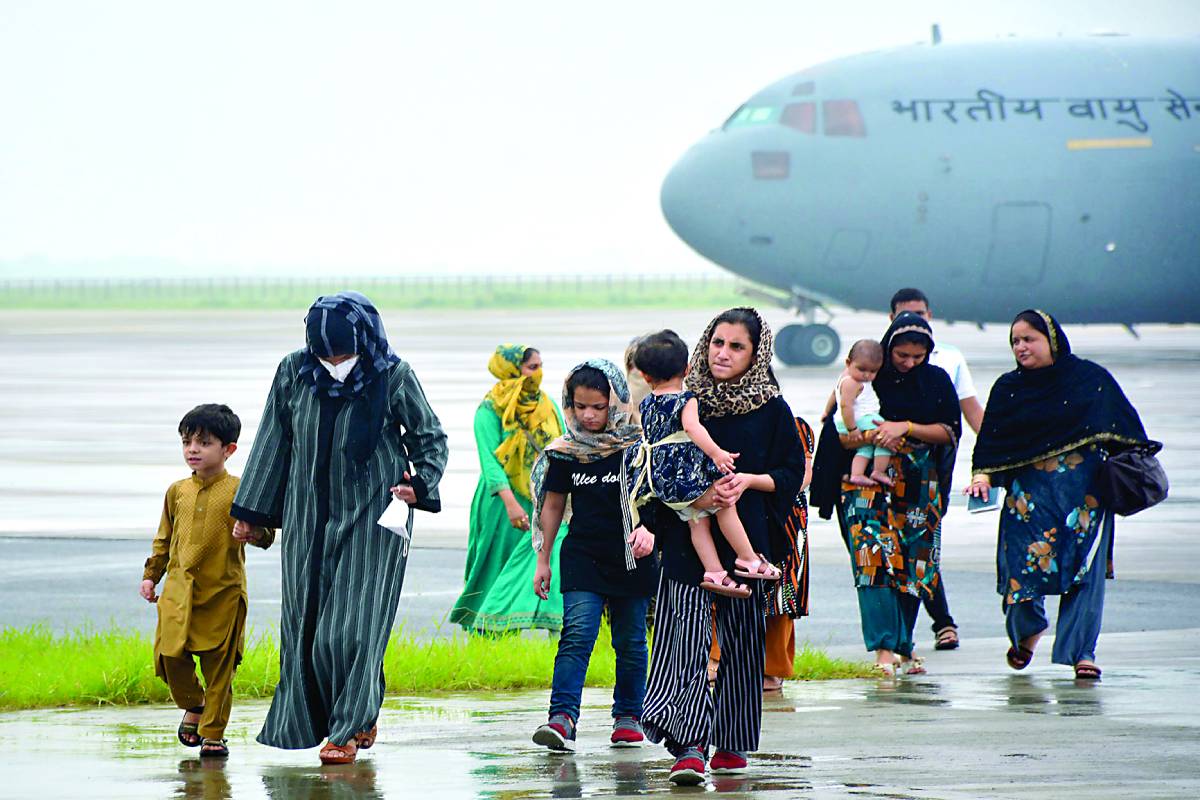Afghanistan receives over 8,000 foreign tourists in two years
More than 8,000 foreign tourists visited Afghanistan over the past two years, local media TOLOnews reported Saturday, citing a government official.
Indo-Afghan trade has been heavily tilted in India’s favour till now. The Taliban takeover throws up significant challenges for India’s exports with trade routes shutting down and the government and the Taliban yet to arrive at a trade agreement

The importance of conflict reporting has undeniably become imperative in the wake of Taliban taking over Afghanistan. However, the Indian media also needs to be the ice-breaker to maintain amicable international relations, bilateral trade and political engagement between the two countries. The evacuation exercise is almost. In this situation, India’s business and trade involving billions of dollars hangs in the balance. Progress in business happens if the nation is ready for bilateral discussions, failing which even ambitious projects will be shelved. So far Taliban has shown a soft stand towards India. Whether it is transient or long-term, that needs to be ceaselessly followed by the Indian media.
China is likely to develop diplomatic channels with Taliban. It is quite apparent that China will vie for trade opportunities through its aggressive methods. Now, the Taliban has formed its new government in an Afghanistan reeling under unrest, insecurity and apprehensions. How can India be a strategic partner with the Taliban regime in Afghanistan? In this context, the role of media will be tested on the anvil of India’s national interests in fostering the government’s ‘Neighborhood First’ foreign policy approach.
Indian media several responsibilities. It should focus on India’s various pacts and treatises signed with Afghanistan. Its bilateral trade has grown by leaps and bounds. Over the past two decades, India’s bilateral trade with Afghanistan grew significantly, clocking $1.5 billion in 2019-2020. Exports from India largely include essentials like garments, pharmaceuticals, medical equipment, computers, hardware materials, sugar and synthetic fiber. Afghanistan was the second-biggest importer of Indian sugar in the
2020-21.
Indo-Afghan trade has been heavily tilted in India’s favour till now. The Taliban takeover throws up significant challenges for India’s exports with trade routes shutting down and the government and the Taliban yet to arrive at a trade agreement. Irrespective of the political instability, India continues to be a major development partner to Afghanistan with an approximate $3bn investment in Afghanistan in multiple infrastructure and development projects.
These projects include the strategic Zaranj Delaram Highway, an ambitious power transmission project from the Uzbek border to Kabul as part of the multi-country multi-agency North East Power System, and the Afghan-India Friendship Dam that produces 42 MW of power and irrigates 75,000 hectares of land.
Indian companies have invested on socio-economic overhead capital worth $3 billion. In 2015, the Prime Minister inaugurated the new Afghan Parliament house built at a cost of $90 million. A slew of ongoing projects including Shatoot Dam in Kabul district and Aga Khan heritage project to restore Bala Hissar Fort south of Kabul are raising concerns. India’s health infrastructure including Indira Gandhi Institute for Child Health and various clinics in several Afghan provinces are hanging in balance. In addition, Indians in Afghanistan have been an employment and revenue model for India. The Indian embassy in Kabul estimates that 1,710 Indians were employed in banks, hospitals, NGOs, telecom, IT, and universities. On the other hand, import restrictions may force India to seek alternative partners which may not be viable in the near future.
India’s business and trade also comprises the education sector, in which scores of Afghan students throng Indian universities and colleges. The Indian Survey of Higher Education (AISHE) claims that 4,504 student admissions from Afghanistan took place in 2019-20, the second highest flow of students from any country into India. Low living costs and scholarships from the Indian Council for Cultural Relations have been contributing factors. However, with the current crisis, Afghan students have requested India to continue their course from within the campus and expedite the paperwork on a war footing. Moreover, women students are especially worried.
It is a known fact that the Taliban regime’s record on education for women has been dubious, to say the least. India should mediate to bridge the gap between the students from Afghanistan and Indian educational institutes.
Afghanistan continues to be the dominant story in international media. However, the journalists should not forget that the Taliban has a history of targeting scribes and restricting media coverage.
After the Taliban takeover, questions have arisen on how India can safeguard these substantial investments made over decades? What shall India do for its finished projects and some that are in the offing? In-depth and ceaseless reporting on these aspects is vital.
Advertisement
Advertisement